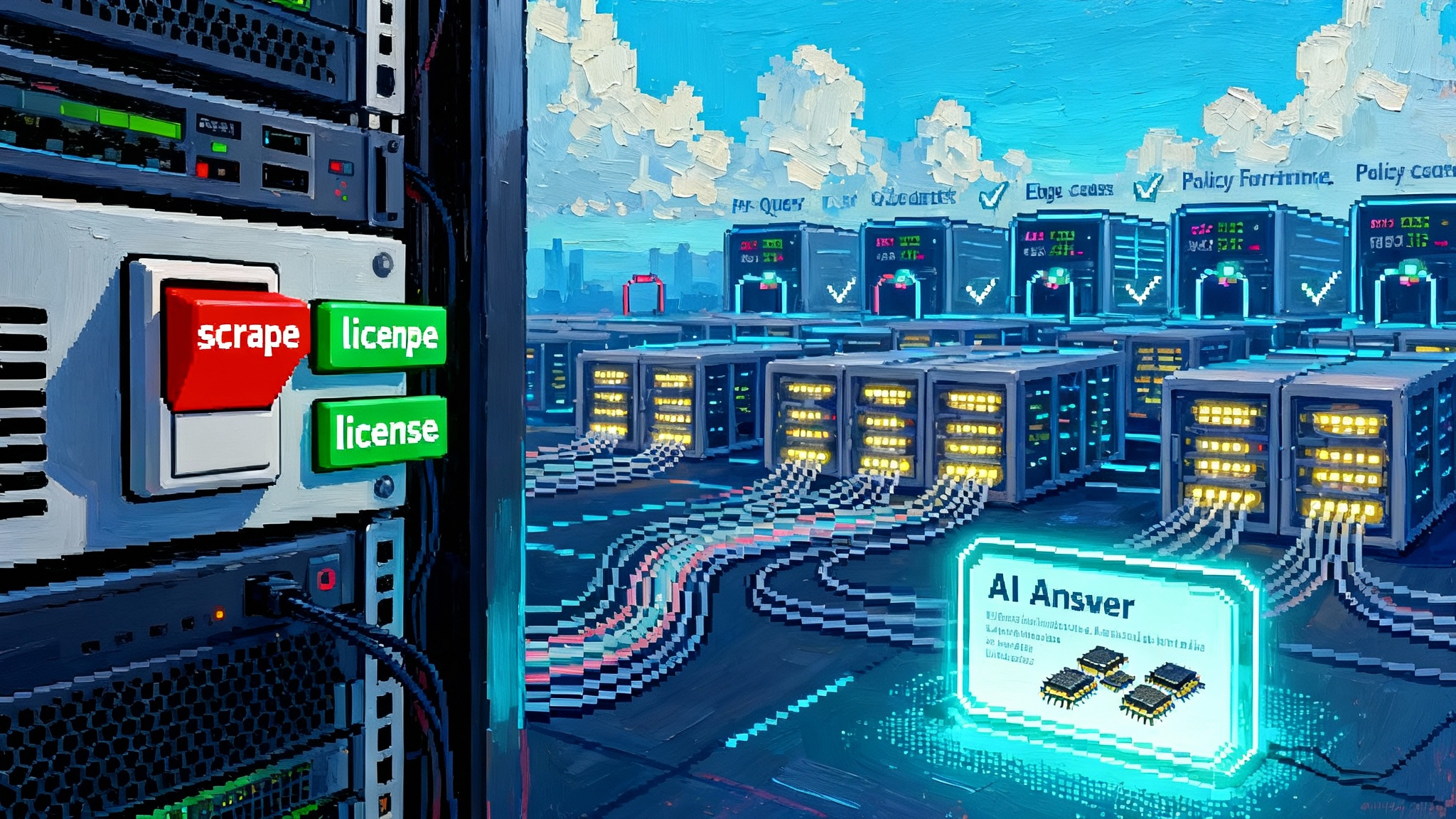Tinker brings distributed fine-tuning to open models
Thinking Machines Lab introduced Tinker on October 1 and 2, 2025, a developer-first service that turns distributed fine-tuning of open-weight LLMs into a turnkey step. The promise is sovereign AI and scale without owning a GPU farm.

The moment distributed fine-tuning went turnkey
On October 1, 2025, and continuing on October 2, Thinking Machines Lab introduced Tinker, a developer-focused service that lets you write small, readable training loops while it handles distributed execution behind the scenes. The pitch is direct. You keep control of data, objectives, and algorithms. Tinker takes care of multi-node orchestration, scheduling, and recovery on managed clusters. In practice this shifts fine-tuning from a specialist project to a tool that teams can reach for in the same way they reach for a build pipeline.
The product announcement spells out a low-level Python API and a managed back end designed for open-weight models such as Llama and Qwen. You define the learning loop, then submit it to run across multiple GPUs without touching bare-metal infrastructure. The idea is simple but important: make post-training feel like programming, not like racking servers. See how Thinking Machines announced Tinker for the high-level overview and examples shared during launch.
If 2023 was the year of prompting and 2024 the year of retrieval-augmented generation, 2025 is shaping up to be the year post-training becomes a habit. Tinker’s debut treats distributed fine-tuning as a button you can press, then tune, which is the sort of abstraction that accelerates adoption.
What Tinker actually delivers
Think of Tinker as a pit crew for model training. You bring the car and the race plan. It brings the tires, fuel, and a team that swaps them in seconds. Concretely, Tinker exposes a compact set of primitives such as forward_backward, optim_step, save_state, and sample. You write short Python loops that define the learning process. Tinker then executes those loops on managed clusters, coordinates across GPUs, handles failures, and returns artifacts for evaluation and deployment.
Two design decisions matter most for teams that need leverage.
- Focus on open weights. Families like Llama and Qwen are explicitly supported, including larger mixture-of-experts variants. You can start with a 1 to 8 billion parameter baseline for prototyping, then scale to something much larger by adjusting a model identifier rather than refactoring your stack.
- Adapters by default. Tinker leans on Low Rank Adaptation, often called LoRA. Instead of updating every weight in a giant network, LoRA learns compact adapters. These adapters are smaller to train, easier to ship, and far less demanding on memory. The result is better cluster utilization and the ability to run more jobs without head-of-line blocking.
To help teams get started fast, the company also released an open-source companion with reference training loops for post-training methods like supervised fine-tuning, preference learning, reinforcement learning from human feedback, math-reasoning rewards, and tool use. Browse the patterns in the Tinker Cookbook on GitHub to see how minimal loops translate into working pipelines.
Why this is a leverage point for sovereign AI
Sovereign AI is about control surfaces: who controls the training data, the learning objective, the model weights, and the operational footprint. Tinker increases leverage because it hands control of three of those surfaces back to the builder while abstracting the operational mess.
- Control of weights. Post-training targets open weights, which produce artifacts you can store, audit, and govern. You are not locked into a provider’s opaque fine-tune endpoint with a take-it-or-leave-it policy.
- Control of objectives. Low-level primitives let teams express the exact losses or rewards that align with regulated or high-stakes domains. When behavior must match policy, generic quality scores are not enough.
- Control of infrastructure choices. You rent a distributed training capability for the duration of a job, then take the adapters home. That keeps capital expenditure low and grants freedom to run inference wherever latency and compliance make sense.
Turnkey distributed fine-tuning becomes the missing middle. It sits between do-it-yourself training that only a few shops can run and closed fine-tune products that hide too much. It gives startups and governments a path to domain control without owning a data center.
Cost and performance math in plain language
Fine-tuning is governed by tokens, memory, and steps. Whether you own the machines or not, the math works the same way. Here is a mental model that helps teams plan.
- Model size. A 7 to 8 billion parameter model is small and can be adapted quickly. Tens of billions are medium. Above 100 billion counts as large and needs careful scheduling.
- Dataset tokens. A pass over 20 million tokens on a small model will be far cheaper than a pass over 2 billion tokens on a large one. Token count multiplied by sequence length and steps defines the bill.
- Adapter rank. With LoRA you select a rank that governs the number of trainable parameters. Higher ranks capture nuance at a cost in memory and time.
- Steps and schedule. Optimizer steps, learning rate schedule, sequence length, and batch size determine convergence and runtime. The right schedule matters as much as the right base model.
A worked example that teams can adapt:
-
Start with a 7 billion parameter base for a legal assistant. Prepare roughly 10 million tokens of domain text plus about 100 thousand instruction pairs. Use LoRA with modest ranks. Run a few thousand steps at a moderate sequence length. This is typically a one to two day wall-clock experiment on managed clusters, not a month.
-
If quality looks promising, scale the base to 30 to 70 billion parameters using the same pipeline. Keep LoRA, increase rank and steps where needed, and do not rewrite infrastructure code. Iteration becomes a turn of the knob instead of a rebuild.
-
Expect cost to concentrate in three places: the time on GPU during training, the time on GPU for evaluation, and the human time to clean data and run sweeps. LoRA compresses the first two. Tinker compresses the third by reducing orchestration overhead.
Compared with closed fine-tune stacks, you avoid per-request lock-in premiums, gain the option to host inference wherever it is cheapest or most compliant, and retain adapter weights as tangible assets. You do trade away one-click simplicity. If your team needs to choose hyperparameters, you must own that choice. The upside is that the results are yours.
Open-weight ecosystems just gained gravity
Open-weight families like Llama and Qwen already power many production systems. What they lacked was a general, low-friction, distributed path to domain adaptation that did not require a head of research operations. Tinker supplies that missing on ramp and strengthens the center of gravity around open tools.
- Portability. Adapters are small, so you can move them between environments and inference providers. This lets you shop for price, latency, or compliance without retraining.
- Composability. You can layer adapters for different tasks or markets. A single base model might carry one adapter for customer support in English and another for claims processing in Spanish.
- Competition. When any capable team can adapt Llama or Qwen quickly, value shifts toward data quality and product design rather than exclusive access to a closed model. Expect an explosion of vertical models that read contracts, draft clinical notes, process invoices, or help engineers reason about legacy code.
This rebalancing echoes shifts we have covered elsewhere. As agentic systems move closer to data and execution planes, they force platforms to support portable components end to end. For a related view of where agent infrastructure is heading, see how agents move into the database and why that changes how we think about context, persistence, and control.
A 30 day playbook to ship a domain model
The temptation after a flashy launch is to overreach. Here is a disciplined plan that a small, practical team can execute in one month.
Week 1: Scope the behavior
- Write a short, testable task charter. Example: extract 12 structured fields from insurance claim emails with 98 percent field-level accuracy, then generate a courteous reply in 100 tokens or less.
- Choose the base model size by latency budget first, not ego. If you must answer in 400 milliseconds on a laptop or thin server, start small and optimize for throughput.
- Define measurable win conditions and slice-specific targets. For instance, new claims versus reopened claims, and handwritten attachments versus typed.
Week 2: Build the training set and loop
- Gather 10 thousand to 100 thousand high-quality examples. Use a mix of real, anonymized data and carefully crafted synthetic data. Document provenance, consent, and licensing.
- Write the smallest possible training loop using Tinker’s primitives. Keep objectives legible. If you adopt reinforcement learning from human feedback, start with a reward that measures the exact field-level accuracy you care about.
- Run a few fast sweeps. Vary adapter rank, sequence length, and learning rate within safe ranges. Track tokens per second and loss curves, and capture artifacts for later reuse.
Week 3: Evaluate for real
- Build a holdout suite with at least three sub-buckets that mirror business reality. For claims, that might be first-time filings, appeals, and fraud-flagged cases.
- Add a small adversarial set to catch shortcutting, such as emails that mimic templates but include conflicting numbers or partial identifiers.
- Instrument your evaluation to capture aggregate metrics and failure exemplars. Fast human inspection of failures shortens the next iteration.
Week 4: Prepare for production
- Export adapters, package them with your inference stack of choice, and run a canary deployment on five percent of traffic.
- Establish monitors for accuracy, latency, and drift. Set rollback criteria you will honor and rehearse the procedure.
- Document training data sources, objectives, and known limitations. Make the document public inside your company and treat it as a living artifact.
The risks that accelerate with turnkey fine-tuning
Distributed fine-tuning at the press of a button will speed up good outcomes and bad ones. These are the specific failure modes to watch and what to do about each.
-
Data governance gaps. When training gets easy, data pipelines get sloppy. Action: implement data lineage and consent checks before any job starts. Build a pre-flight gate that verifies sources, deduplicates personal information where required, and logs sampling decisions. Require sign-off from a human data steward for each run.
-
Evaluation leakage. If your evaluation set overlaps with training, you will fool yourself. Action: hash every example and store hashes in a registry. At evaluation time, reject any hashed example that appears in training. Maintain a disjoint red-team set that no one can access during development.
-
Model drift in the wild. Domain language changes faster than you expect. Action: create a quarterly refresh cadence. Sample production data, annotate one to five percent, and rerun small adapter updates. Track calibration metrics, not just accuracy, so you can see when the model grows overconfident.
-
Adapter sprawl. Once adapters are easy to create, you will have too many. Action: treat adapters like packages. Version them, deprecate them, and delete those that are not used. Maintain a registry that maps adapters to owning teams and supported use cases.
-
Hidden reliance on closed components. It is easy to end up with closed evaluators or closed embedding models next to open-weight fine-tunes. Action: decide where you require open components and where you accept closed ones. Document that boundary so procurement and security are not surprised later.
Security posture also needs to keep up with the pace of iteration. Teams adopting portable adapters should revisit runtime controls and guardrails. For a practical look at how the security layer is evolving for agentic systems, examine recent work on runtime security for agentic apps and how those controls integrate with continuous fine-tuning pipelines.
How this shifts buyer power
Closed fine-tune stacks still offer real advantages. They often include hardened safety filters, instant deployment, and a single bill to pay. They also bring hard-to-explain failures when objectives are opaque and they create long-term dependency on a vendor’s roadmap and quota system.
Open-weight post-training backed by a turnkey distributed service changes the buyer math in three ways.
- Negotiation leverage. If you can adapt Llama or Qwen to your task in a week, you can walk away from a closed fine-tune quote that does not fit your risk or budget profile.
- Compliance control. You can run training where the data is allowed to be processed and run inference where latency and cost make sense. The adapter artifact becomes the portable unit of value.
- Talent leverage. Your researchers and engineers work in plain Python with visible loops, not a proprietary training template. This speeds up debugging and cuts the time to try new ideas.
Expect procurement teams to request line-item quotes that include both closed fine-tune options and open-weight adapter plans. Expect security leaders to ask for adapter registries, data lineage proofs, and rollback drills. Expect platform teams to extend buildpacks and clusters so adapter deployment becomes as simple as shipping a container.
What to watch next
- Adapter-first inference. Inference providers will race to accept LoRA adapters natively, hot-swap them, and serve them from fast storage. This will eventually feel like switching models by flipping a feature flag. We are already seeing adjacent platforms simplify the path to deployment, much like recent progress where agentic browsers cross the chasm for interactive automation.
- Multimodal turnkeys. The same primitives that make text post-training straightforward will extend to vision, speech, and action models. Cookbook examples for multi-turn tool use are an early signal.
- Better evaluations. Expect fresh open evaluation suites tied to specific verticals, from contract lifecycle management to radiology. The useful ones will ship with interpretability hooks so teams can understand failure modes, not just measure scores.
- Budget-aware loops. Training loops that take a cost budget as input will adapt schedules and ranks automatically to fit that budget. Integrations with cost monitors will make this feedback loop faster.
The takeaway
The October 1 to 2 debut of Tinker is more than a product release. It represents a flip in defaults. Distributed fine-tuning for open-weight models is now a practical, everyday move for teams that want control over behavior, data, and deployment. If you are building a vertical model, you no longer need to own a GPU farm or surrender your objectives to a black box. You can keep your hands on the steering wheel while a managed pit crew handles the tires and fuel.
Teams that treat this like a new power tool will move faster than teams that wait for a one-size-fits-all model to fit their domain. Start small, measure honestly, ship adapters, and plan for refresh. That is how turnkey fine-tuning becomes leverage and how sovereign AI shifts from slogan to operating model.








